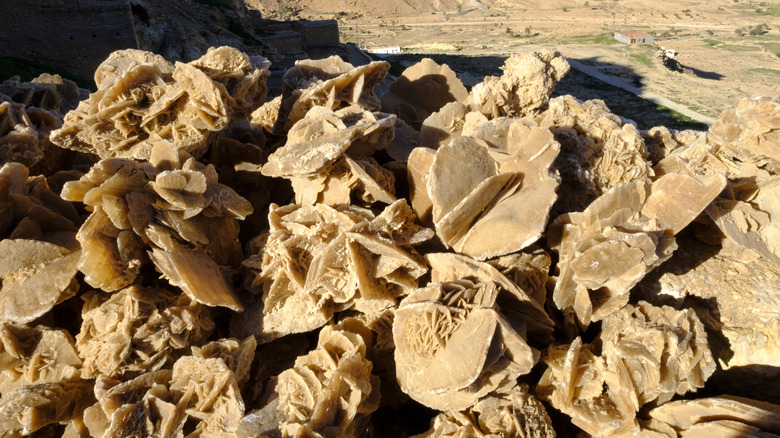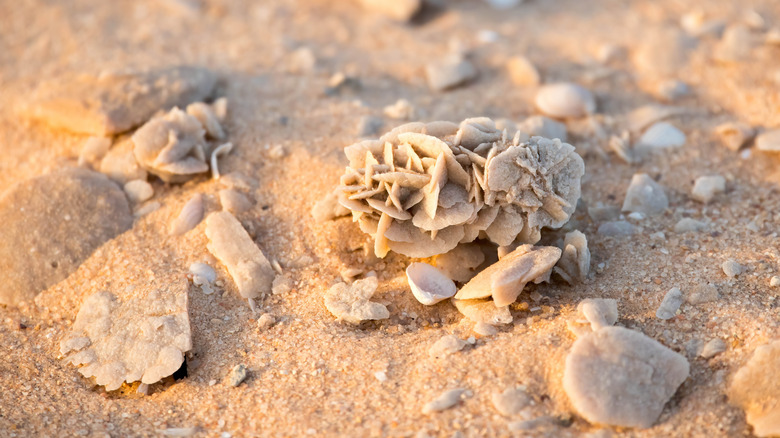Desert Roses: Details We Know About This Natural Phenomenon
Deserts are arid ecosystems covering one-fifth of Earth's land area. They receive up to 10 inches of precipitation a year (via National Geographic). They can be found on every continent and are home to 1 billion people. While many people might consider it a hostile environment, the deserts are full of surprises and hidden beauties. The desert roses are one of them.
Despite its name, a desert rose is not a rose, but a mineral with a rose-like shape. The desert roses can be found in Africa (Algeria, Tunisia, Morocco, Egypt, and Namibia), Western Asia (Saudi Arabia, Qatar, and the United Arab Emirates), and Europe (Spain). It is also possible to see desert roses in remote and arid regions of Australia, Mexico, and the United States (via Rare Gold Nuggets).
The shape of desert roses will depend on the region. According to Geology In, shallow areas will have amber-colored desert roses with tiny crystals (the "petals"). In deeper layers, the desert roses are yellow or colorless. The crystals are larger and blocky.
How desert roses are formed
The desert roses can be found on salt flats found in deserts. They combine sand, salt and gypsum crystals. Those crystals are formed when the water evaporates, and they often have a prism shape that grows up to one meter. The crystals are affected by erosion, salt, sand, and other elements in the desert, which give them a petal's shape (via Geology In). Larger crystals tend to contain more salt.
The desert roses often appear in clusters, making them look like a bunch of flowers. According to Rare Gold Nuggets, the desert roses are tiny and will measure up to four inches in diameter. The largest desert rose ever found measured 17 inches across, 10 inches high, and weighed 125 pounds.
The desert rose is also known as "sand rose," "rose rock," "selenite rose," "gypsum rose," and "baryte rose." In some cultures, people believe that each desert rose has a guardian spirit, and they are a symbol of protection.

